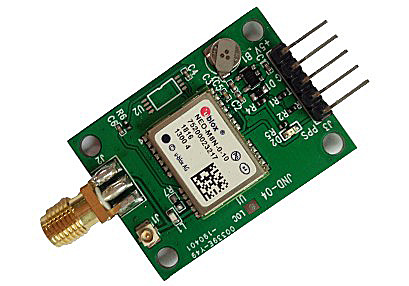[People in space] GNSS extended application positioning and navigation
As we all know, the United States in 1994 fully built GPS in the realization of the global sea, land, air, a full range of real-time navigation, positioning and timing functions, GPS the system to all-weather, high-precision, automated, high-efficiency and other notable features in the aviation, aerospace, surveying and mapping, transportation, meteorology, military, agriculture and other fields have been widely used. Today, in addition to the GPS system, China's independent Beidou satellite navigation system has been developed to the third generation, which will be completed in the first half of next year, and Europe's Galileo system and Russia's GLONASS system are constantly being constructed and updated, and these satellite navigation systems and their augmentation systems constitute the Global Navigation Satellite System GNSS, which has become the infrastructure of the modern great power's security and economy, and is of great significance in the fields of politics, economy, military and other fields .
With the rapid development of the Internet, information and communication technologies, GNSS is influencing and changing the way we live at an unprecedented rate. For example, when you drive from Beijing to Shanghai for the first time, you can use your smartphone's GNSS positioning function to confirm your location and use the navigation function to plan your driving route. This has become an economical, practical and popular way to guide your trip.
GNSS The system can not only provide navigation services for ground users, but also cover the distance from the ground 30,000 pounds km Earth low-orbit satellites, the International Space Station International Space Station and astronauts GNSS to achieve high-precision, reliable positioning and navigation. However, for more distant space, the proportion GNSS constellation higher spacecraft? Or even on the moon?Can GNSS still provide navigation support? Yes, just on October 30, the U.S. space news website reported that the next generation of astronauts will use it GPS to complete positioning operations when landing on the lunar surface.
So, how does GNSS the system provide positioning navigation support for users in higher orbits and on the moon? First, let's understand the use case GNSS positioning elements:
The user receiver can receive more than 4 navigation satellite signals, can measure the pseudo-distance between the receiver and the navigation satellite from the signal, can be demodulated on each signal navigation message data code, access to navigation satellite orbit information.
Therefore, it is possible to perform positioning solving. Since the GNSS system is mainly ground and 3000km therefore, GNSS satellites transmit antennas to the earth. For example, the GPS antenna main flap beamwidth is 42.6°, which can cover the ground 30000km below the altitude range. Then, higher orbit users can only receive from the same side of the earth to the other side of the GPS earth's satellite's main valve and side valve signal or satellite's side valve signal.
The farther away the user is from the earth, the farther away from the earth GNSS satellite distance, the greater the signal transmission distance, the weaker the signal. And the side flap signal of GNSS satellite transmission antenna is weaker than the main flap signal. Therefore, for GNSS for users outside the constellation, the signal reception difficulty is greatly GNSS satellite number is greatly reduced. Considering the Earth-Moon distance (about 38,000,000km), the target of the moon surface to receive GNSS signal strength can only reach 1/1000 of the ground users.
Users far away from navigation satellites will not only produce the above problems, but also affect the positioning accuracy. Positioning accuracy depends on the spatial geometric distribution of navigation satellites relative to the user. The positional accuracy factor is commonly used (PDOP) to express the positioning accuracy. In terms of geometry, when visible navigation satellites are uniformly distributed around the user, the geometric distribution is better, the corresponding PDOP value is small, and the positioning accuracy is high; on the contrary, when visible navigation satellites are concentrated in one place or aligned in a straight line, the geometric distribution is poor, the corresponding PDOP value is large, and the positioning accuracy is low.
In terms of quantization, assuming the unit distance between each visible navigation satellite and the user, the volume of the cone composed of each navigation satellite and user connection is inversely proportional to the corresponding PDOP value. For users on the ground and below 3000km, good positioning results generally correspond to a single-point positioning accuracy of about 3 meters for PDOP values of approx. For geostationary orbit satellites (altitude of about 36,000km), the corresponding single-point positioning accuracy of PDOP reaches about 10 meters.
As the user's orbit improves, it is farther away from the GNSS satellites, resulting in a poor geometric distribution of visible navigation satellites and a dramatic increase in the position accuracy factor. For lunar targets, the single-point positioning accuracy available for PDOP values may deteriorate to the order of hundreds or kilometers.
The weak signal and poor measurement geometry problems facing lunar target navigation described above can be improved in two ways:
GNSS receivers are equipped with more receiving antennas, especially high gain receiving antennas, to maximize the strength of the received signal and to achieve weak signal capture tracking, which can increase the number of visible navigation satellites and improve the PDOP value to some extent.GNSS receivers are equipped with more stable clocks to implement enhanced navigation filtering algorithms and clock difference models, which enable the receivers to extrapolate the orbital dynamics and clock difference model to address the inability to locate at certain moments with less than 4 stars and deteriorating PDOP values.
With these performance improvements, the GNSS receiver can be adapted for spacecraft navigation in higher orbits.
In addition, we should also address the problem of GNSS system coverage for positioning and navigation of monthly targets. Due to the tidal locking phenomenon in astronomy, the period of the Moon around the Earth is equal to the rotation period (both 27.5 days), and one side of the Moon can only be seen from the Earth. In fact, due to the equilibrium of the Moon, we can see more than 50% of the Moon, but 59%, including the North and South Polar regions. Then, GNSS the system can cover the front side of the Moon and the extreme regions, but cannot serve targets on the back side of the Moon, such as the Chang'e-4 probe.
Tidal locking of lunar libration phenomena
In fact, in order to make GNSS scientists and engineers have carried out a great deal of scientific research work, from the near distance to expand to more distant space, until the Earth-Moon system space. As early as GPS when the system was still in the demonstration and testing stage, Lockheed clearly concluded the analysis: the use of high-gain antennas on Earth's high-orbiting satellites can achieve GPS navigation. In the past 20 years, many space agencies have conducted technical studies and utilized GNSS experiments to support high orbit spacecraft navigation, and have achieved good application results.
For example, in 2001, NASA used a high-gain C/A code GPS receiver carried by an amateur satellite (AMSAT-OSCAR 40, AO-40) to conduct experiments, and 59,000 km from the ground successfully received more than four GPS through post-processing, which enabled the positioning of the satellite signals.In 2015, NASA's Magnetospheric Multiscale Mission (MMS) was supported by the Goddard Space Flight Center developed four spin-stabilized formation of satellites Navigator receiver achieved 150,000 Taiwan km altitude GPS navigation, accuracy of 10m order of magnitude.
Navigator Receiver
In October 2014, China in the third phase of the lunar exploration project re-entry probe (CE-5T1) for the first time on board the GNSS receiver successfully obtained 60,000 units km lunar back to the orbit of the GNSS data and real-time positioning results of the GNSS technology for the lunar probe navigation provides valuable experience.
CE-5T1 flight track
The use of these research results and experimental experience GNSS lunar probe and moon landing astronauts positioning navigation is just around the corner. In addition, by the end of June 2020, China's BeiDou 3 system will be fully completed, and the global service capability will be further enhanced.The addition of GPS BeiDou 3 system can double the number of navigation satellites visible to the lunar target, greatly improving the geometric distribution of navigation satellites and providing a more reliable guarantee of positioning and navigation for the lunar target.
This year is the 50th anniversary of the U.S. Apollo moon landing, NASA is in full swing Artemis (ARTEMIS) moon landing program to develop a new generation of heavy-lift launch vehicles and Orion spacecraft, plans to realize multiple round trips to the south pole of the moon in 2024 manned moon landing activities. Astronauts will then patrol the Aitken Basin in rovers using lunar GNSS navigation technology.

Ltd. specializes in high-precision GNSS modules and wireless communication products, technology development and application promotion service providers, relying on the wireless communication technology in the field of R & D and promotion of experience, JUNODA set up a team with a wealth of experience in hardware and software development technology, aimed at domestic and foreign OEM / ODM customers and system integrators to provide high-quality, high-performance wireless modules and applications! We aim to provide high-quality, high-performance wireless modules and application programs to OEM/ODM customers and system integrators at home and abroad, and create long-term value for customers!
The company mainly provides integrated antenna module, dual-frequency high-precision module, single-frequency high-precision module, thousand-seeking high-precision module, Zhongke micro-positioning module, U-BLOX positioning module, SICOM communication module, inertial navigation DR module, UWM GNSS module, RTK differential module, 4G communication module and high-precision antenna, etc., the products are sold well in Beijing, Shanghai, Shenzhen, Guangdong, Jiangsu, Zhejiang, Sichuan, Hunan and other parts of the country. Our GNSS modules are widely used in many application fields, such as drones, vehicle security monitoring and dispatching, automatic bus stop announcement, DVR, car DVD navigation, GPS electronic dog, synchronized timing, high-altitude balloon monitoring, engineering machinery, industrial automation, etc. In the field of wireless communication products, the company is closely involved in the field of wireless communication, such as RTK differential module, 4G communication module and high-precision antenna.
In the field of wireless communication products, the company follows the latest development of international communication technology, introduces and acts as an agent for wireless communication modules that meet the market demand, and the products have a comprehensive layout from 2G, 3G, 4G, and are widely used in financial electronic payment, vehicle remote control, remote advertising information, repeater monitoring, mobile Internet terminals, smart home, remote medical care, network testing, enterprise information management, anti-theft alarm, Remote video transmission, intelligent meter reading, mobile computing, network navigation, voice phone, wireless gateway and other fields. Focused areas include video surveillance, network optimization, routers, POS and other M2M industry applications.
If you need to consult, please contact online customer service!














